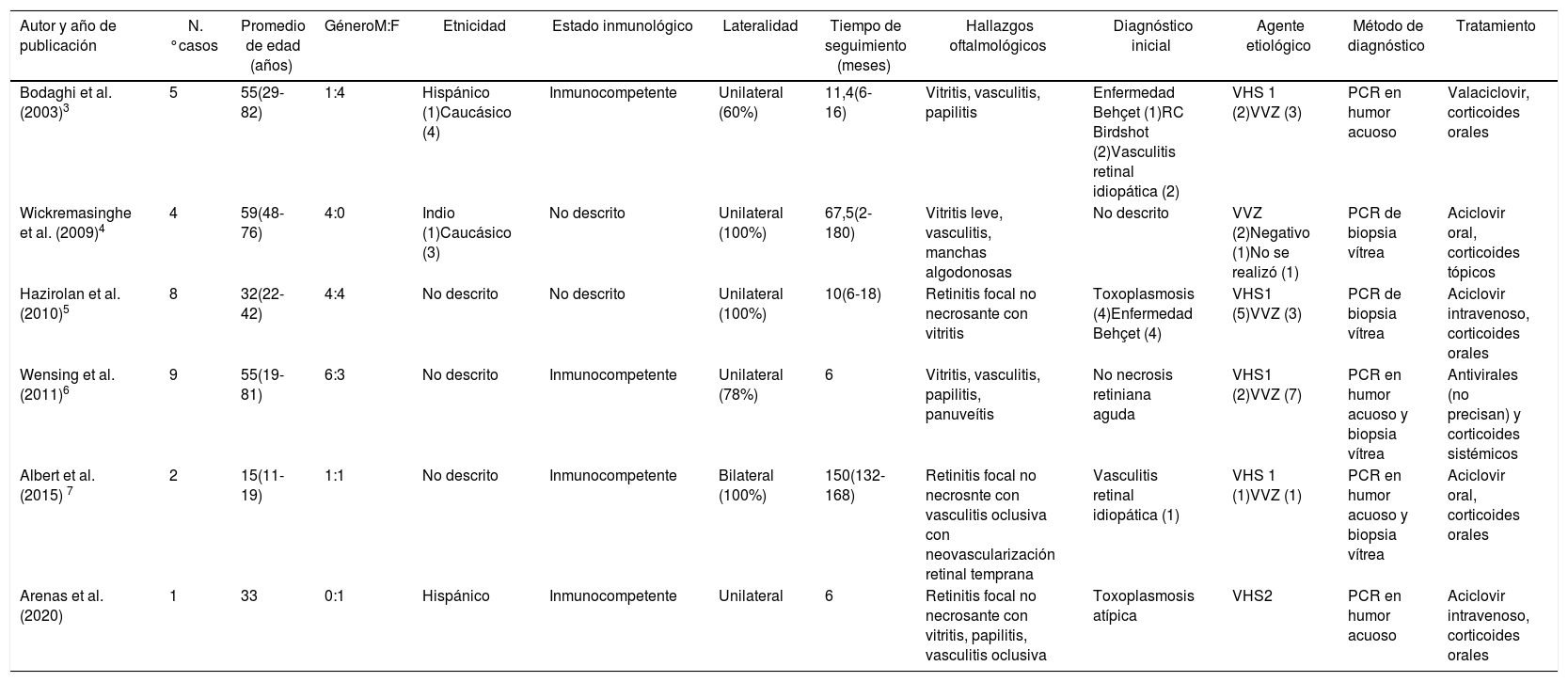En países en vías de desarrollo la principal etiología de uveítis posterior es de origen infeccioso, siendo el herpes virus el agente viral más común, con un amplio espectro de manifestaciones oculares que puede depender del estado inmunológico del paciente: desde una forma leve focal de retinitis herpética no necrosante (RHNN) hasta una forma severa de necrosis retiniana aguda. Presentamos un caso de RHNN por VHS 2 y los diferentes diagnósticos diferenciales planteados previos a su diagnóstico: toxoplasmosis ocular atípica, tuberculosis ocular y necrosis retiniana aguda. Durante su evolución presentó una caída súbita de la agudeza visual a pesar del tratamiento antiviral y con corticoides sistémicos y de la mejoría clínica de la lesión. Este evento conllevó a replantear las entidades sospechadas, estableciendo la RHNN como diagnóstico definitivo por exclusión, lo cual constituyó un reto diagnóstico.
In developed countries, the main origin of posterior uveitis is an infection. Herpes is the most common viral agent, as it has a wide spectrum of ocular manifestations. These manifestations may depend on the immunological state of the patient, and range from a mild focal form of non - necrotising herpetic retinitis (NNHR) to a severe form of acute retinal necrosis (ARN). A case of NNHR due to Herpes simplex virus type 2 (HSV-2) is reported, along with the different differential diagnostics prior to its diagnosis: atypical ocular toxoplasmosis, ocular tuberculosis, and ARN. During its course, despite the antiviral treatment, systemic corticoids and the clinical improvement of the injury, there was a drastic drop in the visual acuity. This event led to the re-evaluation of the suspected entities, establishing the NNHR as a definitive diagnostic by exclusion, which was a diagnostic challenge.
Artículo
Comprando el artículo el PDF del mismo podrá ser descargado
Precio 19,34 €
Comprar ahora









